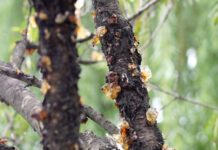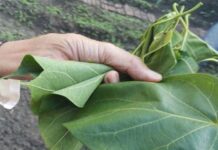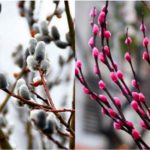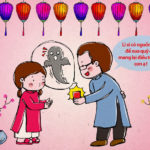The Tet Doan Ngo, or Double Fifth Festival, is a unique Vietnamese tradition with a fascinating custom of tree caning. But is there more to this ritual than meets the eye? Could it be based on scientific principles rather than just superstition? Let’s delve into this intriguing topic and uncover the truth.
1 Unraveling the Meaning of Tree Caning on Tet Doan Ngo
 Exploring the significance of tree caning on Tet Doan Ngo
Exploring the significance of tree caning on Tet Doan Ngo
Vietnamese culture is deeply rooted in agriculture, and Tet Doan Ngo, which falls on the 5th of May, is believed to be a critical transitional period for crops. Various customs, such as gathering medicinal leaves, consuming fruits, tro cakes, and fermented sticky rice, are observed during this time to ward off diseases and ensure a healthy harvest. Tree caning is one such tradition, specifically targeting trees that have been infested with pests, bearing little to no fruit.
At precisely noon (the hour of Ngo), a pair, typically an adult and a child, perform the tree caning ritual. The younger individual climbs the tree, embodying the spirit of the tree, while the older one asks why the tree hasn’t borne fruit. They then knock on the tree trunk with a knife, engaging in a dialogue with the “tree.”

This ritual culminates in a gentle strike on the trunk, accompanied by a “threat” that the tree will be cut down if it doesn’t bear fruit in the next season. This custom reflects the Vietnamese people’s deep yearning for abundance and prosperity, not just in their crops but in all aspects of life.
2 Unveiling the Science Behind Tree Caning’s Effectiveness
According to vnexpress.net, Vu Tien Dung offers a scientific explanation for this phenomenon:

3 Exploring the Scientific Explanations

Plants thrive through nutrient absorption for growth and leaf development. When we strike the tree trunk with a knife, we interfere with its natural growth process. If a tree is lush but fruitless, it indicates balanced and robust growth across all its parts. By inflicting a wound, we create an adverse condition for the tree’s development. Instinctively, the tree will then prioritize channeling nutrients to fruit production to ensure its survival and continuation of the species.
In essence, this practice manipulates the tree’s natural growth process, and according to metabolic laws, the tree will exert all its energy into fruit production.
4 Is Tree Caning Enough?

While tree caning is a cherished tradition, modern agricultural practices have evolved. Today, gardeners and farmers manipulate the metabolic laws by pruning branches and shaping trees to achieve the same goal of abundant fruit yield. Additionally, a scientific approach to farming, including proper fertilizing, care, weather conditions, and soil suitability, is crucial for a bountiful harvest. Ignoring these factors and relying solely on old planting methods will not yield desirable results.
Tree caning is a fascinating Vietnamese tradition with a scientific basis. However, to ensure a plentiful harvest, it must be complemented by modern farming practices such as adjusting fertilization, meticulous care, soil aeration, and tree care.
7 Appropriate and Practical Lunar New Year Gifts for Teachers
With Lunar New Year just around the corner, what better way to express your appreciation to your teachers than with a special gift? Choosing the right gift can be tricky, so let Dien May XANH help you out! Here, we have hand-picked 7 luxurious yet suitable gifts that you can give to your teachers this Tet. Check them out now!







































